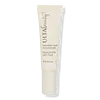What's inside
What's inside
 Key Ingredients
Key Ingredients

No key ingredients
 Benefits
Benefits

No benefits
 Concerns
Concerns

 Ingredients Side-by-side
Ingredients Side-by-side

Isododecane
EmollientTalc
AbrasiveCyclopentasiloxane
EmollientTrimethylsiloxysilicate
EmollientDisteardimonium Hectorite
StabilisingPolyethylene
AbrasiveVp/Eicosene Copolymer
Boron Nitride
AbsorbentAluminum Starch Octenylsuccinate
AbsorbentPropylene Carbonate
SolventSorbitan Sesquioleate
EmulsifyingSynthetic Beeswax
Emulsion StabilisingPentaerythrityl Tetraisostearate
EmollientMethicone
EmollientPhenoxyethanol
PreservativeAcrylates Copolymer
Magnesium Carbonate
AbsorbentDimethicone Crosspolymer
Emulsion StabilisingBisabolol
MaskingSorbic Acid
PreservativeOctyldodecyl Stearoyl Stearate
EmollientCaprylic/Capric Triglyceride
MaskingDimethicone/Vinyl Dimethicone Crosspolymer
Skin ConditioningCrithmum Maritimum Extract
Skin ConditioningDimethiconol
EmollientNelumbo Nucifera Stamen Extract
Skin ProtectingCI 77163
Cosmetic ColorantIron Oxides
CI 77492
Cosmetic ColorantCI 77499
Cosmetic ColorantTitanium Dioxide
Cosmetic ColorantIsododecane, Talc, Cyclopentasiloxane, Trimethylsiloxysilicate, Disteardimonium Hectorite, Polyethylene, Vp/Eicosene Copolymer, Boron Nitride, Aluminum Starch Octenylsuccinate, Propylene Carbonate, Sorbitan Sesquioleate, Synthetic Beeswax, Pentaerythrityl Tetraisostearate, Methicone, Phenoxyethanol, Acrylates Copolymer, Magnesium Carbonate, Dimethicone Crosspolymer, Bisabolol, Sorbic Acid, Octyldodecyl Stearoyl Stearate, Caprylic/Capric Triglyceride, Dimethicone/Vinyl Dimethicone Crosspolymer, Crithmum Maritimum Extract, Dimethiconol, Nelumbo Nucifera Stamen Extract, CI 77163, Iron Oxides, CI 77492, CI 77499, Titanium Dioxide
Ingredients Explained
These ingredients are found in both products.
Ingredients higher up in an ingredient list are typically present in a larger amount.
Cyclopentasiloxane, or D5, is a silicone used to improve texture of products and trap moisture.
D5 is considered lightweight and volatile. Volatile means it evaporates quickly after application. Once evaporated, D5 leaves a thin barrier that helps keep skin hydrated.
It is also an emollient. Emollients help soften the skin and prevent water loss. Silicones create a silky texture in products. D5 helps other ingredients become more spreadable.
Studies show D5 is safe to use in skincare products. We recommend speaking with a skincare professional if you have concerns.
Learn more about CyclopentasiloxaneDisteardimonium Hectorite comes from the clay mineral named hectorite. It is used to add thickness to a product.
It can also help stabilize a product by helping to disperse other ingredients.
Hectorite is a rare, white clay mineral.
Learn more about Disteardimonium HectoriteIsododecane is a fragrance, emollient, and solvent.
As an emollient, it helps your skin stay soft and hydrated. Emollients help trap moisture into your skin.
Isododecane's role as a solvent makes it a great texture enhancer. It spreads smoothly on skin and does not leave a sticky feeling behind. Isododecane also helps prevent color transfer in makeup products.
Isododecane is not absorbed into skin.
Learn more about IsododecaneThis ingredient is a solvent. It helps dissolve active ingredients and alter the texture of products.
Propylene Carbonate is commonly used in makeup and with clay, such as montmorillonite or bentonite.
Studies show this ingredient to be safe for cosmetics. When it is undiluted, it can cause skin irritation. (It is always diluted in skincare and makeup). This ingredient is water-soluble.
Propylene Carbonate is created from propylene glycol and carbonic acid.
Learn more about Propylene CarbonateSorbitan Sesquioleate is derived from sorbitol and oleic acid. It is an emulsifier and prevents ingredients from separating.
Specifically, this ingredient is a water-in-oil emulsifier, meaning it helps water dissolve into oil.
Some studies suggest this ingredient may cause irritation in some people. If you are unsure, it is best to patch test.
This ingredient may not be Malassezia folliculitis, or fungal-acne safe.
Learn more about Sorbitan SesquioleateSynthetic beeswax is created to be identical in structure to beeswax. It possesses the same occlusive and emulsion properties.
A blend of fatty acid esters, fatty acids, and alcohols are used to create synthetic beeswax. Whether or not this ingredient is vegan depends on the source. Sometimes, lanolin is used for its creation.
This ingredient may not be Malassezia folliculitis, or fungal-acne safe.
Learn more about Synthetic BeeswaxThis silicone is an emollient. Emollients create a thin film on the skin to prevent moisture from escaping.
It is not soluble in water and helps increase water-resistance in products.
According to a manufacturer, it can blend seamlessly with silicone oils, such as Cyclopentasiloxane.
Learn more about Trimethylsiloxysilicate